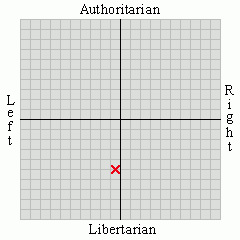To begin with we must ask why we are even having this discussion. In the constitutional, democratic republic of the United States of America, we should all hope that the will of the people be represented at the ballot box. Instead of thinking up schemes to deny access, we should be working overtime to ensure that every eligible voter has unfettered opportunity to cast their ballot.
So why are voter ID bills designed to limit access to the ballot box popping up in so many states? Those promoting these bills raise the specter of voter fraud, but so far have failed to produce evidence of wide spread or organized efforts to illegally vote. The few incidences cited certainly do not justify laws that may disfranchise millions of voters.
I’ll grant that there is evidence of isolated instances where fraud has been alleged, but where are the trials and the convictions? Besides, there are laws already on the books to punish voter fraud that are severe enough that they should deter such activity.
Currently there are 23 states and the District of Columbia that allow voters to show either photo and non-photo IDs. Accepted forms of ID include utility bills or bank statements. In these jurisdictions there has been no evidence presented that voter impersonation fraud is occurring.
Where we get into the heart of this effort is that government-issued photo identification requirements have a disproportionate impact on minority voters – voters who might not select a certain political party at the ballot box. The real reason for the voter ID bills is the same as the poll taxes and literacy tests of the late 19th and early 20th centuries – to deny the right to vote to those not likely to vote for the current ruling party.
A 2006 nationwide study of voting-age citizens by the Brennan Center for Justice at the New York University School of Law found that African-Americans are more than three times as likely as Caucasians to lack a government-issued photo ID, with one in four African-Americans owning no such ID.
In Missouri, the Secretary of State identified nearly 240,000 registered voters who are mostly elderly, disabled, poor, and minorities, who also lack a government issued photo ID. In March of this year a Federal Judge struck down the Republican-backed ballot measure because it would unfairly deny a basic right to a large segment of Americans.
Very much the same thing is happening in multiple states. Already this year strict photo ID requirements have been introduced in well over half the states and have been passed in Kansas, Tennessee, Texas, South Carolina, and Wisconsin. Bills are going on the ballot in Mississippi, Missouri and most likely Minnesota and is pending in Maine, New Hampshire, North Carolina, Pennsylvania and Rhode Island.
In each and every case the evidence used to promote the bill is thin and the resulting disenfranchisement is broad. Minorities and the elderly will be the disproportionately affected by photo ID laws.
In every case the bills are Republican backed. Prior to 1964 every effort to disenfranchise voters was Democrat backed. That changed when LBJ signed the voting rights act in 1965. A whole bunch of a certain group of citizens jumped parties that year, but the tactic hasn’t changed – and neither has the intent.
###
Suggested reading:
Davidson, Chandler, Quiet Revolution in the South, The impact of the voting rights act, 1965-1990, Princeton, 1964
Brennan Center for Justice, Citizens Without Proof: A Survey of Americans’ Possession of Documentary Proof of Citizenship and Photo Identification (Nov 2006)
###








0 Comments:
Post a Comment